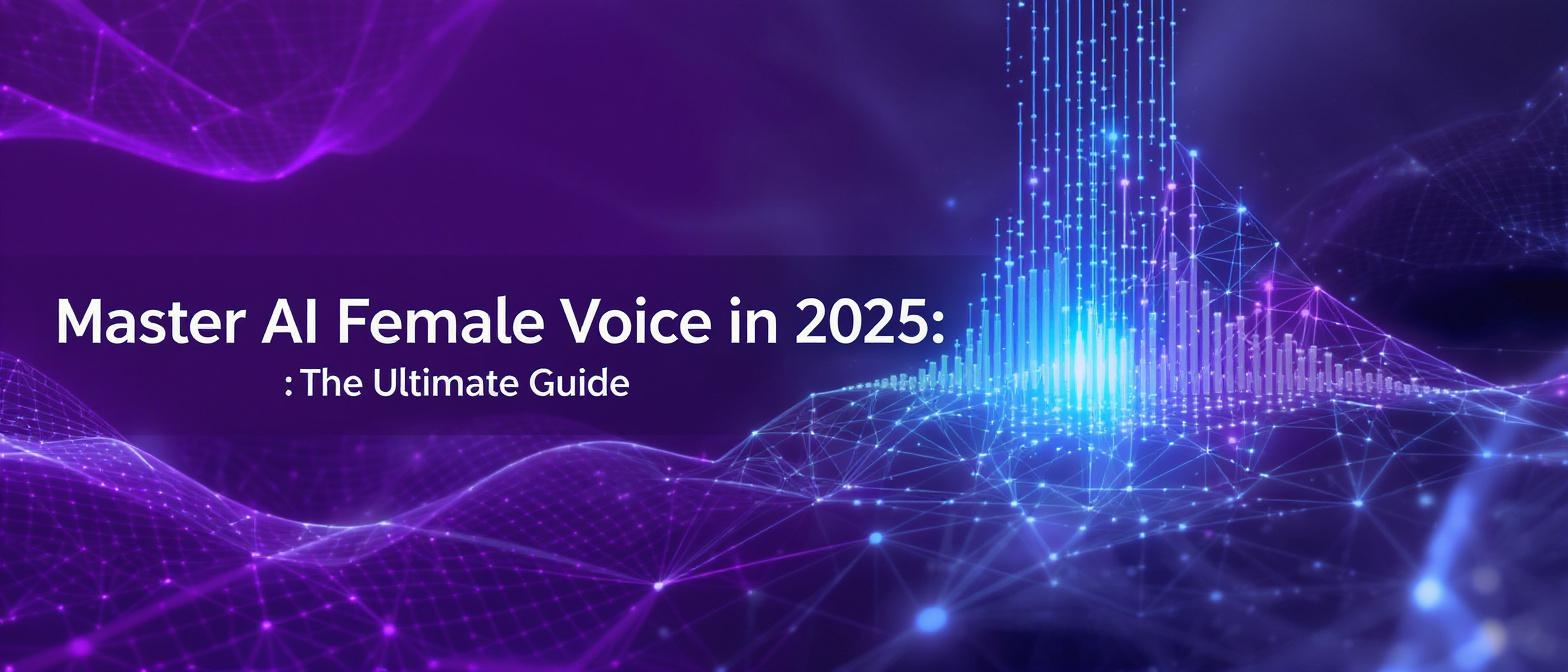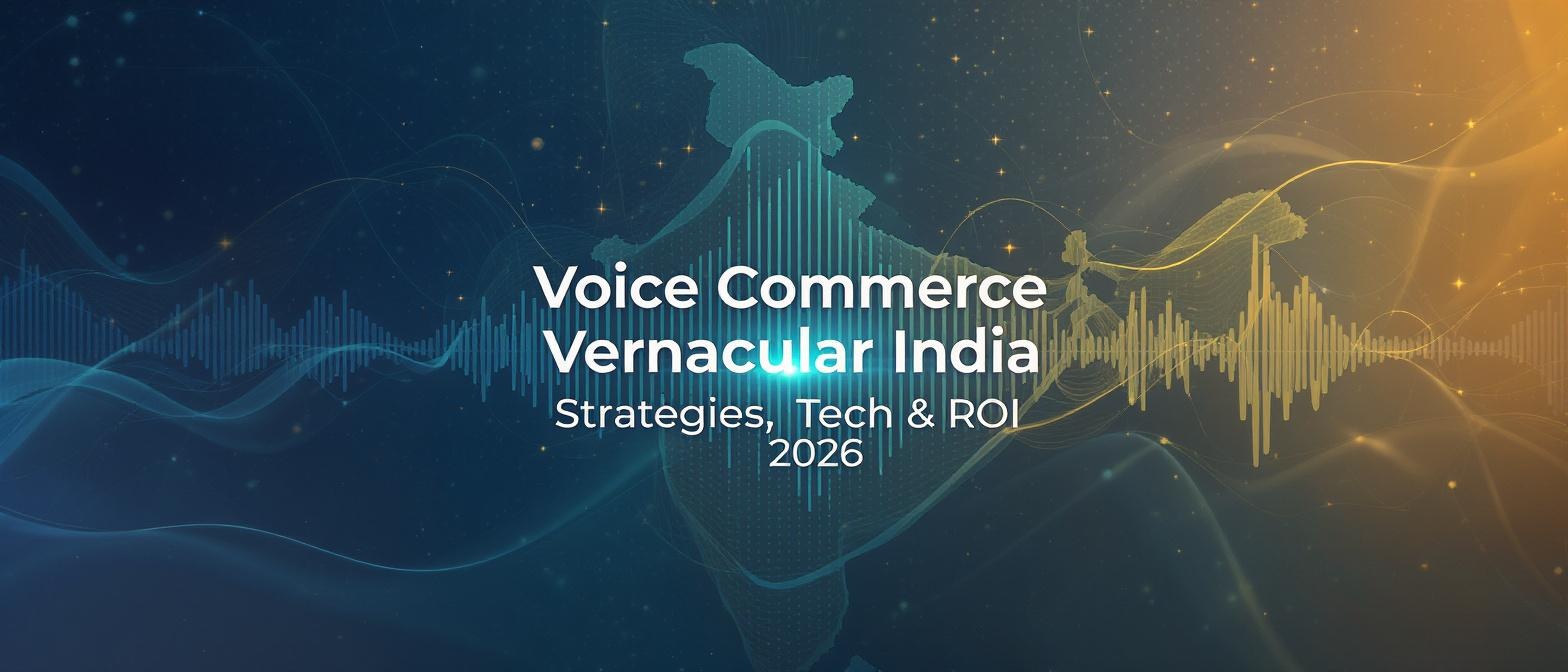Beyond Robotic: How to Master AI Female Voice for Hyper-Personalized Content in 2025
Estimated reading time: ~15 minutes
Key Takeaways
- Strategic brand voice differentiation is essential for standing out in AI-driven communication.
- Advanced neural network models add emotional depth and authenticity that goes beyond generic TTS.
- The SCALE Framework ensures structured implementation, from persona definition to ethical considerations.
- Clear ROI metrics validate the business impact of AI voice technology, from cost savings to revenue lift.
- Preparing for future multimodal AI keeps your brand at the forefront of hyper-personalized experiences.
Introduction
The demand for authentic digital experiences is exploding. As we move towards 2025, a staggering 80% of businesses are projected to integrate AI-driven voice technology into their customer service operations alone, signaling a monumental shift in how brands communicate. Yet, many still struggle with a fundamental problem: their AI voices sound robotic, generic, and emotionally flat. This disconnect between technological capability and authentic execution prevents brands from building genuine connections with their audience. While basic guides offer surface-level tips, they often miss the strategic depth required to truly master the AI female voice and transform it into a core asset for your brand. They fail to address the complex interplay between neural network models, ethical considerations, and the crucial metrics that define success.
This guide moves beyond the basics of simply generating speech. We will delve into the nuances of creating emotionally resonant, hyper-personalized audio experiences at scale. We'll explore a comprehensive framework for implementation, uncover the technical intricacies of voice cloning technology that competitors overlook, and provide a clear methodology for measuring your return on investment AI Video Generation ROI: Marketing Intelligence Guide. Prepare to learn not just how to generate an AI voice, but how to craft a unique vocal identity that captivates your audience, builds trust, and drives measurable business growth in the new era of AI-powered communication. For more on the evolution of AI, see this insightful article on AI development.
Main Body
Section 1: Reframe the Challenge: From "Natural Sounding" to "Strategically Authentic"
The common goal for AI voice generation has long been to sound “natural” or “human-like.” While a worthy starting point, this objective is too simplistic for the competitive landscape of 2025. The real challenge isn’t just mimicking human speech; it’s about creating a strategically authentic voice that embodies your brand’s unique persona and achieves specific business objectives. A generic, pleasant-sounding voice is forgettable. A strategically authentic voice is an unforgettable brand asset.
Competitor content often focuses on basic parameters like pitch and speed. However, true authenticity is born from a deeper strategy. It involves aligning vocal characteristics with your target audience’s expectations and your brand’s core values. This is critical, as the global AI voice market is not just growing, it’s maturing, having reached $5.4 billion in 2024 with a 25% year-over-year increase. This growth is fueled by businesses seeking differentiation, not assimilation. The challenge is further compounded by what is known as the “uncanny valley” of audio—where a voice is close to human but slightly off, creating a sense of unease. Avoiding this requires more than simple adjustments; it demands a nuanced understanding of prosody, emotional inflection, and cultural context. Furthermore, with 90% of businesses adopting AI to stay competitive, simply having an AI voice is no longer enough. The new imperative is to have a voice that is intentionally and uniquely yours, capable of building brand equity with every word. Explore the challenges of voice AI implementation in this detailed analysis and AI Voice Cloning for Game Development: Complete Guide 2025.
Section 2: Innovation & Solutions: The Tech Behind Emotionally Rich Voices
Achieving strategic authenticity requires moving beyond basic text-to-speech (TTS) and embracing advanced neural network-based models. Competitors might mention these models, but they rarely explain how they create superior results. The magic lies in architectures like Generative Adversarial Networks (GANs) and advanced autoencoders, which are trained not just on words, but on the subtle, non-verbal cues of human speech. These models analyze vast datasets of human voices to learn the nuances of emotional expression—the slight tremor in a voice conveying empathy, the upward inflection of excitement, or the measured pace of authority.
This is where the true innovation lies. Instead of just converting text to phonemes, these systems predict and generate the appropriate emotional tone based on the script’s context. They can differentiate between a question that’s a genuine inquiry versus one that’s rhetorical, and adjust the intonation accordingly. This allows for the creation of content that feels dynamic and engaging, not monotonous. Platforms like Studio by TrueFan AI enable this leap in quality by building their technology on such sophisticated models. They utilize high-quality voice data from professional actors, ensuring the foundational data for the AI is already rich with emotional depth. The system is then able to deconstruct these performances and reapply the learned emotional patterns to any new script, effectively giving creators a palette of emotions to paint with, rather than a single, flat color. This technical depth is what separates a simple voice generator from a strategic content creation platform. For more on AI Audio Integration, check out How AI Audio Integration is Revolutionizing Corporate Training Videos.
Section 3: Advanced Implementation: The "SCALE" Framework for Voice Mastery
Deploying an AI voice effectively requires a structured approach, not just a series of ad-hoc tips. Competitors often provide a checklist of actions, but a strategic framework ensures that your AI voice initiatives are repeatable, measurable, and aligned with business goals. We propose the “SCALE” Framework: Strategy, Creation, Amplification, Learning, and Ethics.
1. Strategy:
- Persona Definition: Before generating a single word, define your voice persona. Is it a knowledgeable guide, a friendly peer, a trusted authority? Document its key attributes: tone (e.g., warm, crisp, energetic), pace (e.g., deliberate, fast-paced), and vocabulary.
- Use Case Mapping: Identify all potential touchpoints. This includes video narration, podcast ads, social media clips, internal training modules, and customer service bots. Tailor the voice’s application to each context.
2. Creation:
- Scripting for AI: Write scripts that are meant to be heard, not read. Use conversational language, contractions, and natural phrasing. Employ punctuation like ellipses (...) to create thoughtful pauses and hyphens to guide emphasis on specific syllables.
- Leveraging Advanced Features: This is where you put the technology to work. With a platform like Studio by TrueFan AI's 175+ language support and AI avatars, you can create localized content that maintains perfect lip-sync and emotional consistency across different regions. Start by generating a baseline video from your script. Then, use the in-browser editor to fine-tune timing and add contextual background visuals.
3. Amplification:
- A/B Testing: Don’t assume your first choice is the best. Create variants of your key content with slight differences in tone or pace. Test these versions on small audience segments to see which performs better on metrics like engagement time or click-through rate.
- Cross-Channel Consistency: Use the same AI voice persona across all your channels to build brand recognition and trust. The consistency reinforces your brand identity in a powerful, subconscious way.
4. Learning:
- Feedback Loops: Actively solicit feedback. Use polls on social media (“How does our new AI narrator sound?”) or analyze user behavior (e.g., drop-off rates in videos) to gauge reception.
- Performance Analytics: Track how content with the AI voice performs against older content. Are people watching longer? Are conversion rates higher? Use this data to refine your strategy.
5. Ethics:
- Transparency: Be clear with your audience that they are listening to an AI-generated voice. This builds trust and preempts potential backlash.
- Consent and Licensing: Ensure your voice provider uses ethically sourced voice data, meaning the original voice actors have given explicit consent and are fairly compensated.
This framework provides a robust methodology for moving from concept to a fully integrated and optimized AI voice strategy.
Section 4: Overlooked Considerations: Navigating the Unseen Complexities
While the promise of AI voice is immense, a successful implementation requires navigating challenges that competitor articles often ignore. These overlooked considerations can be the difference between a successful project and a costly failure.
First is the issue of data privacy and security. When using voice cloning features, you are often handling sensitive data, whether it’s the voice of a company executive or a hired influencer. It is paramount to work with platforms that have robust security certifications, like ISO 27001 & SOC 2, which ensure that this biometric data is protected from misuse. A breach could lead to unauthorized deepfakes and severe reputational damage.
Second is the subtle but critical challenge of maintaining brand voice in a multilingual context. A direct translation of a script often fails to capture cultural nuances. A phrase that is warm and engaging in English might sound stiff or even rude in Japanese. The solution is not just translation, but transcreation—adapting the message itself to fit the cultural context, and then using an AI voice that can deliver it with the correct local intonation and emotional weight. This goes far beyond simply offering many languages; it’s about ensuring authenticity in each one. For a deeper dive into the challenges of AI voice recognition, refer to this comprehensive guide and AI Video Training Engagement.
Finally, there’s the strategic consideration of content moderation. When you provide a self-serve AI tool to a team or the public, you must have guardrails in place. Without built-in filters for hate speech, profanity, or other prohibited content, a powerful tool can become a liability. An ethical AI platform must have a “walled garden” approach, offering flexibility within a framework of safety and compliance to protect the brand.
Section 5: ROI & Metrics: Proving the Value of Your AI Voice
One of the most significant gaps in typical AI voice guides is the absence of a clear discussion on Return on Investment (ROI). Investing in AI voice technology is not just a creative decision; it’s a business decision that needs to be justified with measurable results. The ROI can be broken down into three main categories:
1. Cost Reduction:
This is the most direct metric. Calculate the savings by comparing the platform’s cost against traditional methods.
- Formula: (Cost of Voice Actors + Studio Rental + Post-Production) - AI Platform Subscription = Savings
- Example: A company spending ₹200,000 annually on freelance voice actors for marketing videos could switch to a platform for ₹19,999/month (₹239,988/year). While this seems like a higher cost initially, the platform allows for unlimited content variations and languages, which would have cost exponentially more with actors. The true saving comes from scale. A single project requiring 5 languages might cost ₹100,000 with actors but is included in the subscription, demonstrating immediate ROI.
2. Efficiency and Productivity Gains:
Time is money. Measure the reduction in time-to-market for new content.
- Metric: Track the average time from script finalization to published video.
- Example: A process that took 2 weeks for recording, editing, and syncing can be reduced to under an hour. Solutions like Studio by TrueFan AI demonstrate ROI through this radical acceleration, allowing marketing teams to A/B test ad creatives or release social media content in near real-time, capitalizing on trends before they fade.
3. Performance and Revenue Lift:
This is the ultimate measure of success. Connect AI voice implementation to key business KPIs.
- Metrics: Track improvements in video completion rates, click-through rates (CTRs) on ads, and conversion rates on landing pages with AI-narrated videos.
- Benchmark Data: Brands using personalized AI voices in their marketing have seen engagement rates increase by as much as 30-40% compared to generic stock audio. By localizing video ads into multiple languages with a consistent AI brand voice, companies can see a 15-20% uplift in conversion rates in new markets. Measuring these metrics proves that the AI voice is not a cost center, but a revenue driver. For more on voice AI ROI, see this enterprise guide.
Section 6: Future Roadmap: Preparing for the Next Wave of Voice AI
The evolution of AI voice is relentless. What is cutting-edge today will be standard tomorrow. To maintain a competitive advantage, it’s essential to understand and prepare for the next wave of innovation, which will move far beyond simple speech generation.
The immediate future is multimodal AI. We are already seeing the fusion of text, voice, and avatar generation. Soon, this will become even more integrated. Imagine an AI that can generate a script, create a voice to perform it with the right emotion, and animate an avatar that gestures and expresses corresponding facial expressions, all from a single prompt. This will enable the creation of truly dynamic and interactive digital humans.
Another significant trend is hyper-personalization at the individual level. In the near future, AI voices will be able to adapt in real-time to a user’s emotional state, detected through their own speech patterns or even text input. If a customer sounds frustrated, the AI support voice will adopt a more calming and empathetic tone. If a user seems excited, the voice will become more energetic.
Finally, the focus on ethical and explainable AI (XAI) will intensify. Stakeholders will demand to know how an AI voice was trained, what data was used, and what safeguards are in place to prevent misuse. Platforms that prioritize transparency, consent, and ethical data sourcing will become the gold standard, building trust not only with their customers but with the public at large. Preparing for this future means choosing partners who are not just technologically advanced, but also ethically responsible. A great resource for emerging trends is this article on AI voice trends for 2025.
Frequently Asked Questions
What is the difference between basic TTS and advanced neural AI voices?
Basic Text-to-Speech (TTS) systems often use a concatenative method, stitching together pre-recorded sounds, which can result in a robotic, disjointed output. Advanced neural AI voices use deep learning models to generate speech from the ground up. They analyze context, punctuation, and sentiment to produce audio with realistic human-like intonation, emotional inflection, and prosody, making them far more engaging and natural-sounding for sophisticated use cases like marketing and entertainment.
How are the voices for AI cloning ethically sourced?
Ethical sourcing is paramount to avoid misuse and ensure fairness. Reputable platforms work directly with professional voice actors who explicitly consent to have their voices cloned. These actors are paid for the initial recording sessions and often receive royalties based on the usage of their AI voice clone. This consent-first model ensures the original creators are compensated and that the digital likeness is used within agreed-upon boundaries, preventing unauthorized deepfakes.
Can an AI voice be truly unique to my brand?
Yes. While many platforms offer a library of stock voices, true brand differentiation comes from creating a custom voice. This can be done by cloning the voice of a brand spokesperson or by working with a platform to generate a unique, net-new voice that is exclusively licensed to your brand. This ensures that your audio identity is as unique and recognizable as your visual logo, preventing competitors from using the same vocal persona.
How does multilingual support work with perfect lip-sync?
Advanced platforms use a two-step process. First, the AI translates the script to the target language, often using a separate model that understands cultural nuances. Second, a specialized voice generation model creates the audio in that language. Critically, the AI also generates precise timing information (visemes) that corresponds to the mouth shapes of the new language. Studio by TrueFan AI, for example, uses this data to animate its AI avatars, ensuring the lips move perfectly in sync with the new audio, whether it’s in Hindi, Spanish, or Japanese.
What are the main implementation challenges to anticipate?
Beyond the technical setup, the primary challenges are strategic and operational. First is achieving a consistent brand persona across dozens or hundreds of pieces of content. Second is the workflow integration—fitting the AI generation process smoothly into your existing content creation pipeline. Finally, the biggest challenge is often internal adoption: training your team to write scripts for AI and to think of the AI voice as a strategic tool rather than just a software feature.
How quickly can I create a video with an AI voice?
The speed has been dramatically reduced with modern platforms. For a standard 60-second marketing or social media video, the process can be completed in minutes. Once your script is finalized, you can input it into the platform, select your avatar and voice, and generate the full, lip-synced video. The rendering time itself is often less than five minutes, representing a massive acceleration compared to the days or weeks required for traditional video production.
Conclusion
Mastering the AI female voice in 2025 is no longer a simple matter of finding a tool that sounds “less robotic.” It has evolved into a strategic discipline that sits at the intersection of technology, branding, and data analytics. While competitors focus on surface-level adjustments, true outperformance comes from a deeper understanding of the underlying technology and a more sophisticated implementation strategy. By reframing the goal from “natural” to “strategically authentic,” you shift from creating forgettable audio to building a powerful, recognizable brand asset.
The journey to mastery involves embracing the nuances of neural network models to evoke genuine emotion, adopting a structured framework like SCALE for seamless execution, and navigating the often-overlooked complexities of ethics and security. Furthermore, by focusing on tangible ROI metrics—cost reduction, efficiency gains, and performance lift—you can transform your AI voice initiative from a creative experiment into a proven revenue driver.
The future is clear: AI voices will become more personalized, more integrated, and more central to how we communicate. Your next step is to move beyond the basic tips and begin implementing a robust strategy. Start by defining your unique voice persona, explore platforms that offer advanced features like multilingual lip-sync and ethical AI avatars, and commit to measuring your impact. The brands that will win the future of digital communication are the ones that are building their authentic voice today.





